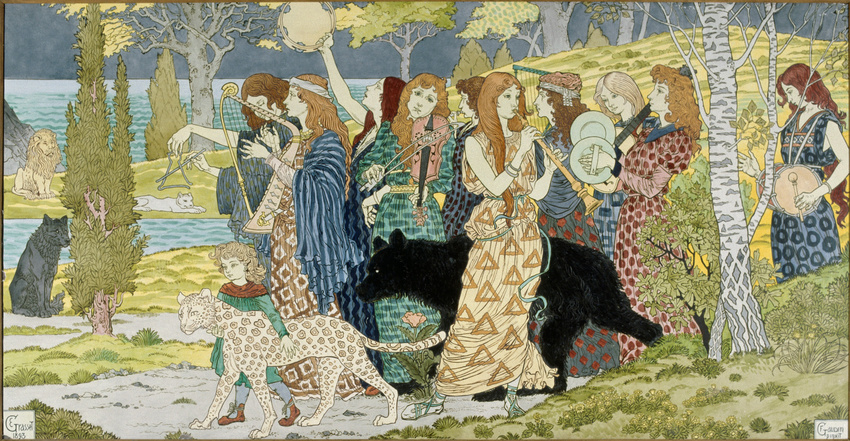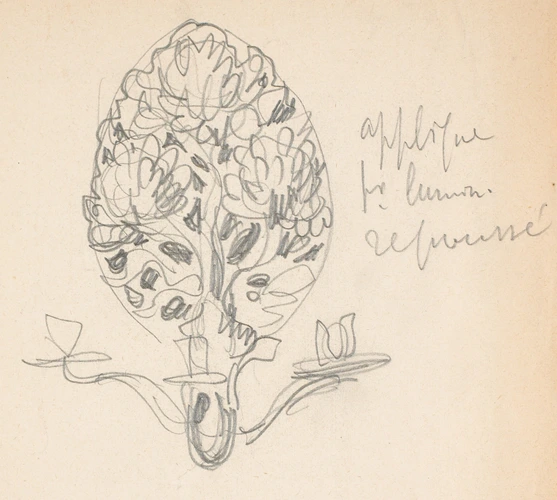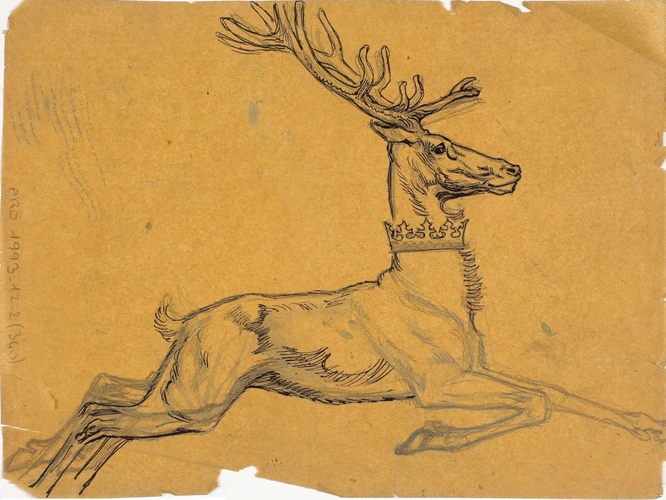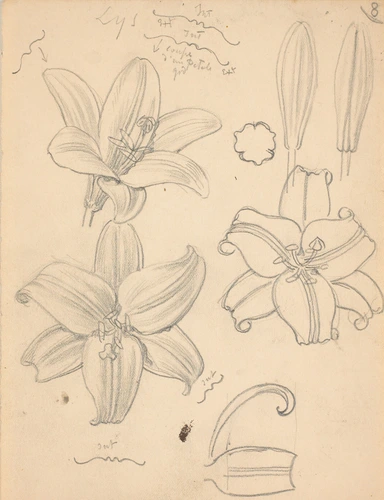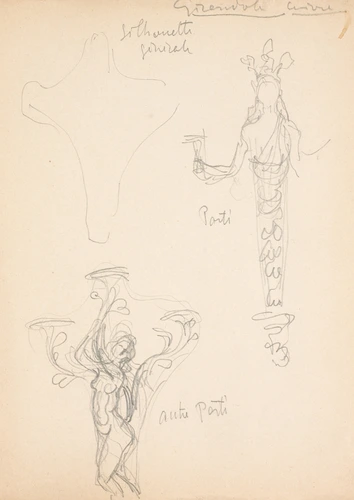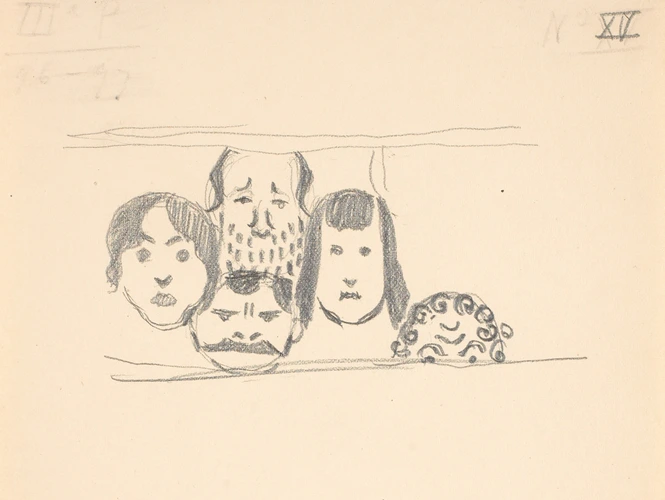Harmonie
For Eugène Grasset, decoration was primordial and the composition was necessarily subordinated to the decorative effect. This is clearly illustrated in this rare work which testifies to the fertile collaboration between Grasset and the master glazier Félix Gaudin.
The technique used here is that of enamelled lava. Known since the 1820s, this process enjoyed an upsurge of interest in the late nineteenth century, particularly in architectural decoration.
The panel Harmony is in a class of its own. The cartoon dates from 1893 and featured in the Grasset exhibition organised in 1894 by the magazine La Plume. The panel itself was shown at the Salon de la Société Nationale des Beaux-Arts in 1895 and drew critical acclaim.
The subject is hard to understand. Perhaps this procession of musicians charming wild animals should be read as an allusion to the Orpheus myth and the civilising virtues of music.
The composition, on the other hand, is typical of Grasset's work. This group of young women walking through luxuriant woods is cleverly constructed, with a dual aesthetic influence. First of all, Japanism, which can be seen in the areas of solid colour, the emphatic outlines and the lack of perspective. Neo-Botticellism next, which is apparent in the women and the undulating rhythm which links them together. The same female type is found in many projects for posters, prints and illustrations by Grasset, also in the Musée d'Orsay.
